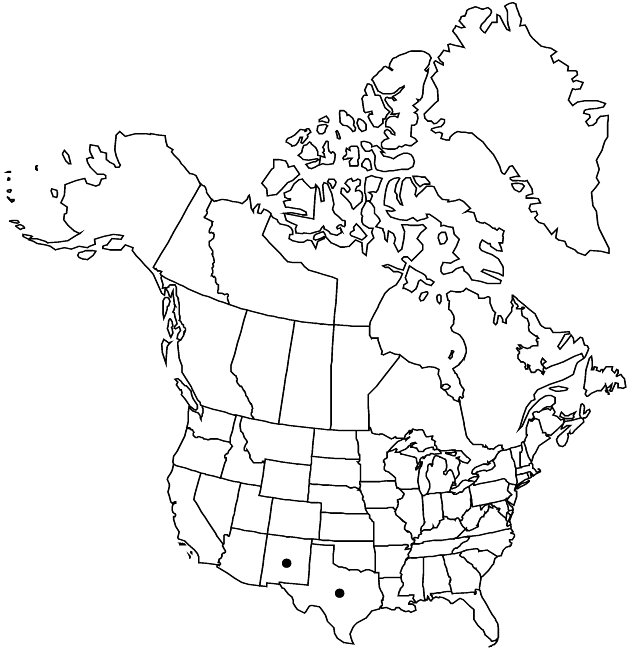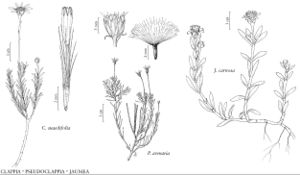Difference between revisions of "Pseudoclappia arenaria"
J. Wash. Acad. Sci. 13: 289. 1923.
Treatment appears in FNA Volume 21. Treatment on page 253.
FNA>Volume Importer |
FNA>Volume Importer |
||
| Line 46: | Line 46: | ||
|publication year=1923 | |publication year=1923 | ||
|special status= | |special status= | ||
| − | |source xml=https://jpend@bitbucket.org/aafc-mbb/fna-data-curation.git/src/ | + | |source xml=https://jpend@bitbucket.org/aafc-mbb/fna-data-curation.git/src/8f726806613d60c220dc4493de13607dd3150896/coarse_grained_fna_xml/V19-20-21/V21_625.xml |
|tribe=Asteraceae tribe Heliantheae | |tribe=Asteraceae tribe Heliantheae | ||
|subtribe=Asteraceae (tribe Heliantheae) subtribe Clappiinae | |subtribe=Asteraceae (tribe Heliantheae) subtribe Clappiinae | ||
Revision as of 15:36, 18 September 2019
Leaf blades 10–35 mm. Ray florets 2–4+; laminae 5–11 mm. Disc florets 20–40+; corollas 6–7 mm. Cypselae ca. 3 mm; pappi 4–6 mm. 2n = 36.
Phenology: Flowering spring–summer.
Habitat: Clays or gypseous-sandy soils, probably seeps, springs
Elevation: 1000–2000 m
Distribution

N.Mex., Tex., Mexico (Coahuila).
Discussion
Selected References
None.
Lower Taxa
None.
